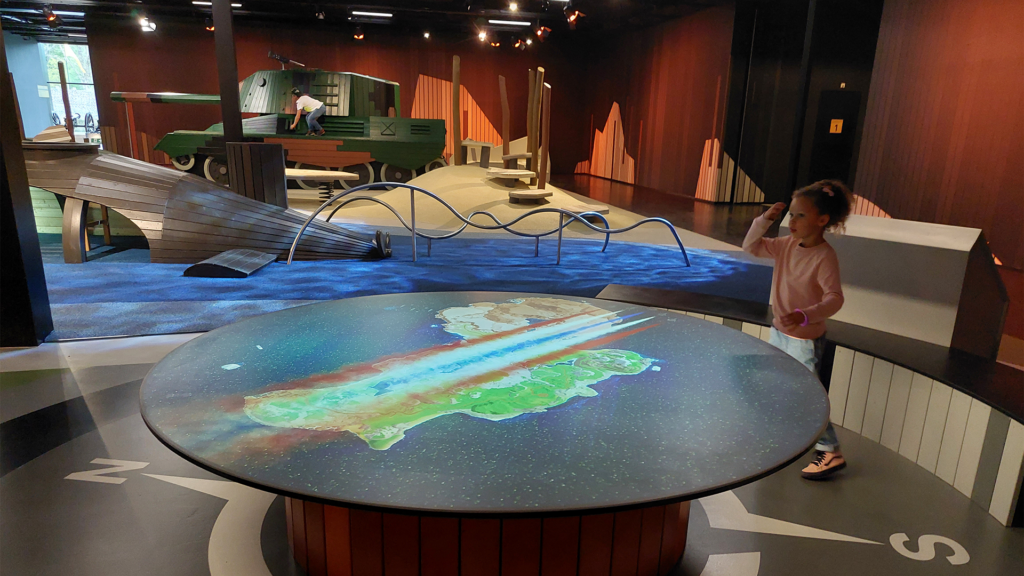A mission-based multiplayer adventure
INTRODUCTION
In the new playground children experience the work of the Dutch army. Kids do so first-hand in an adventurous way by playing interactive games. The multiplayer setup makes the kids experience different aspects and vehicles. The players contribute to a joint operation by doing exciting missions. The kids drive and shoot a tank or a submarine, or fly a helicopter providing support. Real-time tactical information and the joint progress is always center stage.
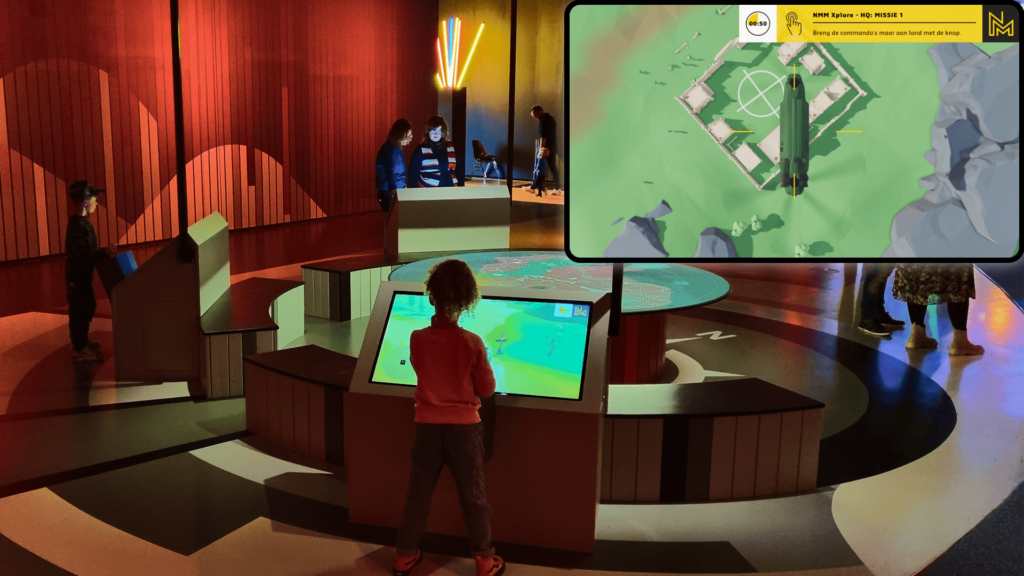
PROJECT DETAILS – Xplore Playground
Client
Nationaal Militair Museum
Realization
2022
Role
Lead designer
Responsibilities Project oversight, Gameplay, Prototyping, User testing, Concept, Interaction, Refinement
Partners
Employer Kiss the Frog (software and design)
Shosho (3D assets and sparring partner)
Heijmans (project management)
KoppelCo (hardware)
Monstrum (interior design)
CONTEXT – Dutch Military Museum
The Nationaal Militair Museum is a military museum in Soesterberg, The Netherlands. It focuses on the history of the Dutch Armed Forces with emphasis on the Royal Netherlands Army and the Royal Netherlands Air Force.
Central in the museum, a new indoor playground is planned. With fantasy and imagination he or she will play, as an ‘explorer’ in the world of the Dutch military.
The new playground should be engaging for all age groups. The museum dedicates a corner of the playground to new interactive games aimed specifically at the older children.
CHALLENGE – A gamified indoor playground experience
Create engaging games with a focus on controlling military vehicles.
INTERPRETATION – Collaborate to command and conquer on multiple stations
Visitors in the command center become operators and strategists and playfully collaborate in completing a joint military operation.
It is about mutual commitment to the same military objective. With operating stations and a tactical command table in the middle, to attract spectators, immerse them and give additional world information in real-time on another scale.
The modern pillars of the Dutch Military are the marine, army, and air force. Each pillar will get its own operator station. On each game station a visitor plays a simple mission and controls a specific vehicle to add to the objective of ending the conflict.
APPROACH – Sprint and cheer
In 4 weekly sprints we designed and developed a fun multiplayer game.
PITCH – Setting the stage
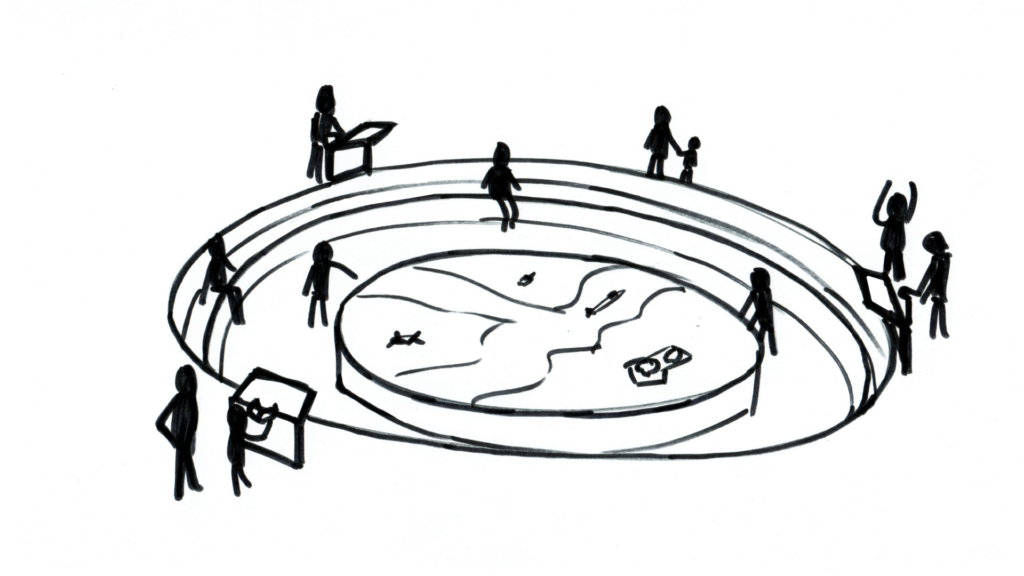
STORYBOARD – Visualizing the experience
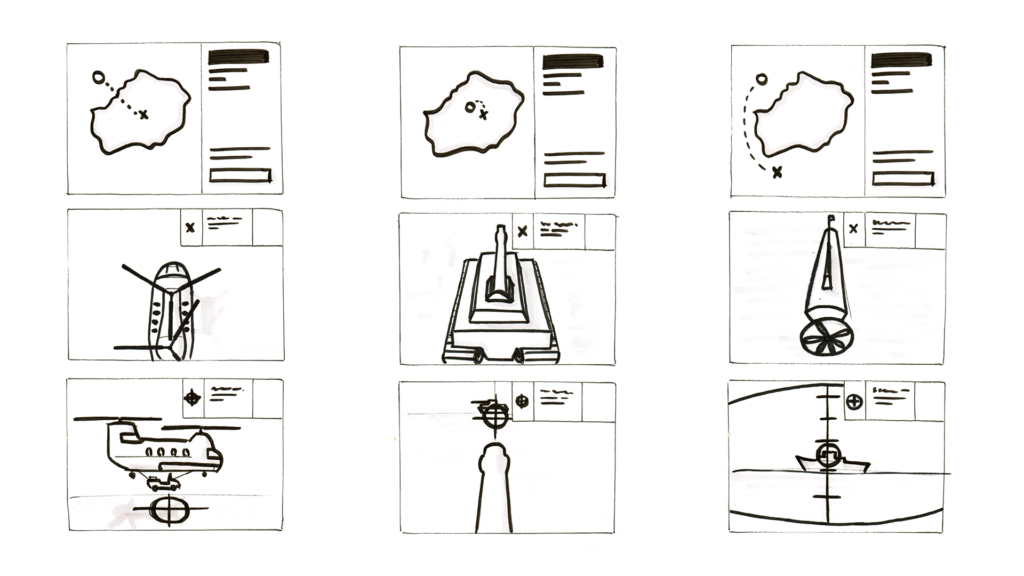
FLOW – A simple structure
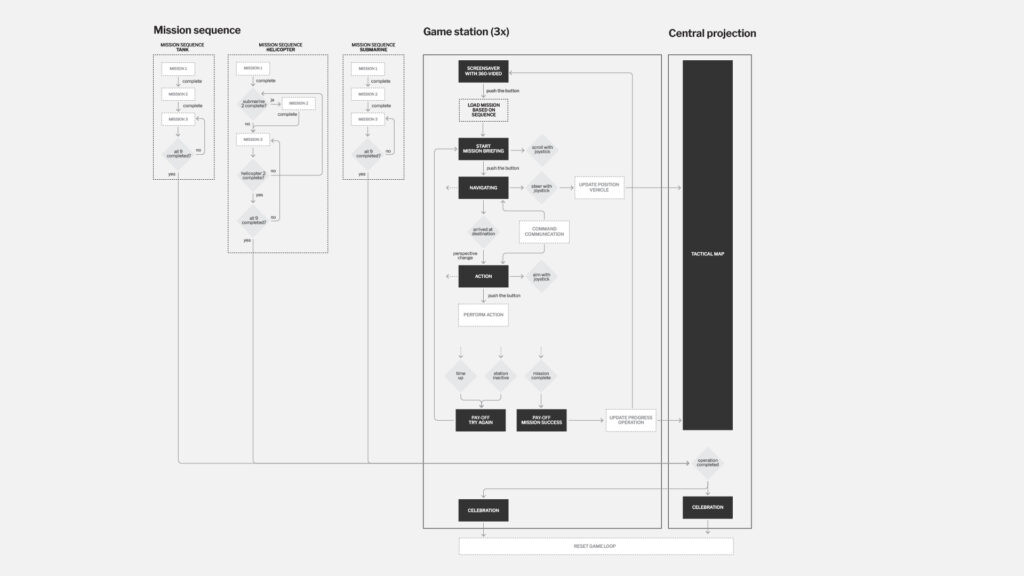
STORYMAPPING – Slicing the story
User Story Mapping is a technique used we used in the discovery phase. We outlined a all the features for the envisioned experience. The result is a Story Map: all the user stories arranged in functional groups. This helped us keep our eye on the big picture while also providing all the details of the whole application, while developing.
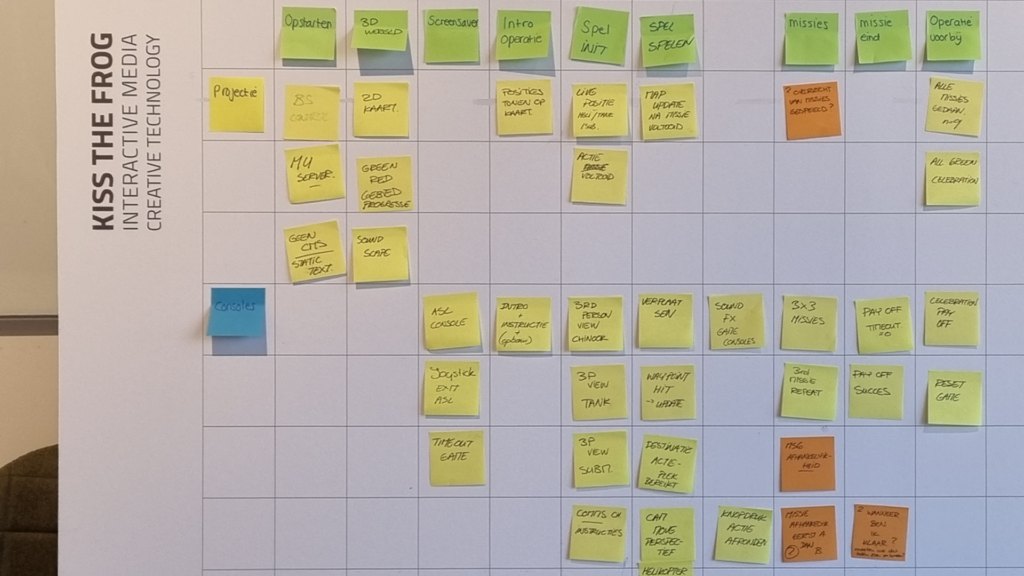
PROTOTYPING – Testing our assumptions
prototype #1: an environment and dimension check, to ensure a good experience in relation to size and the vehicles in early stage of the asset creation
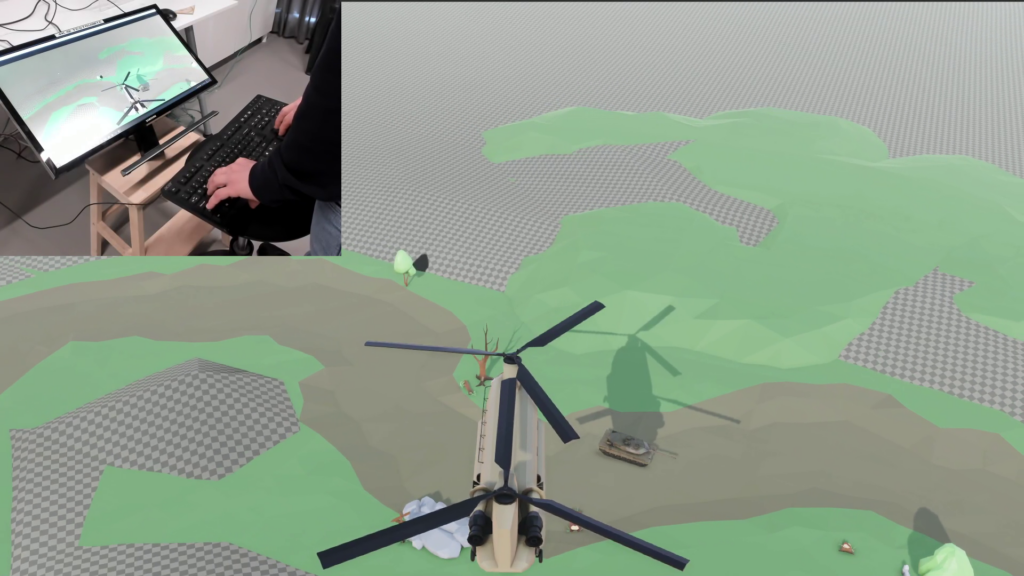
prototype #2: technical proof of concept of the multiplayer
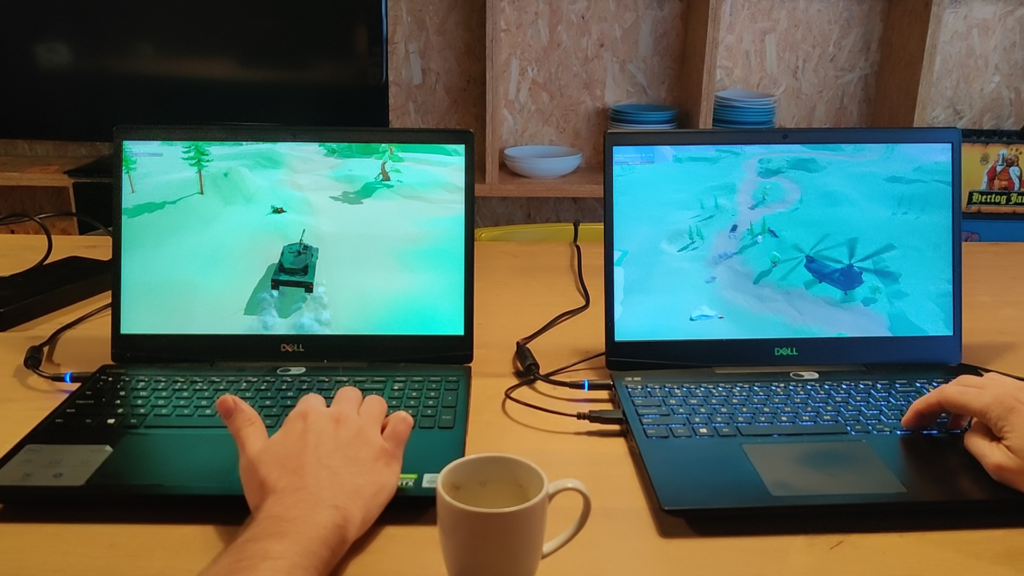
prototype #3: for detailed visual design, tweaking vehicle behavior and gameplay / mission assets
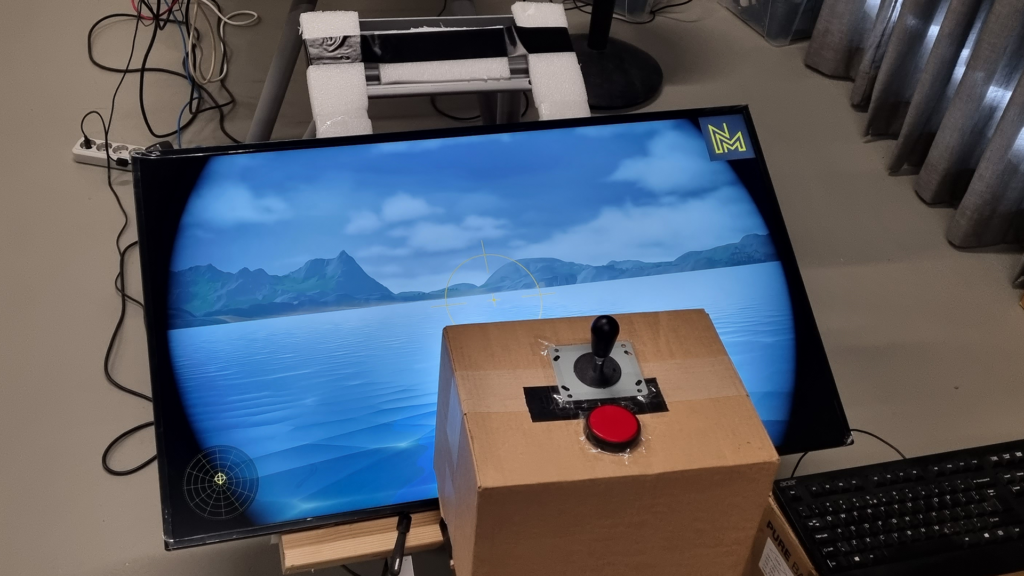
CLIENT MEETINGS – Keeping them in the loop
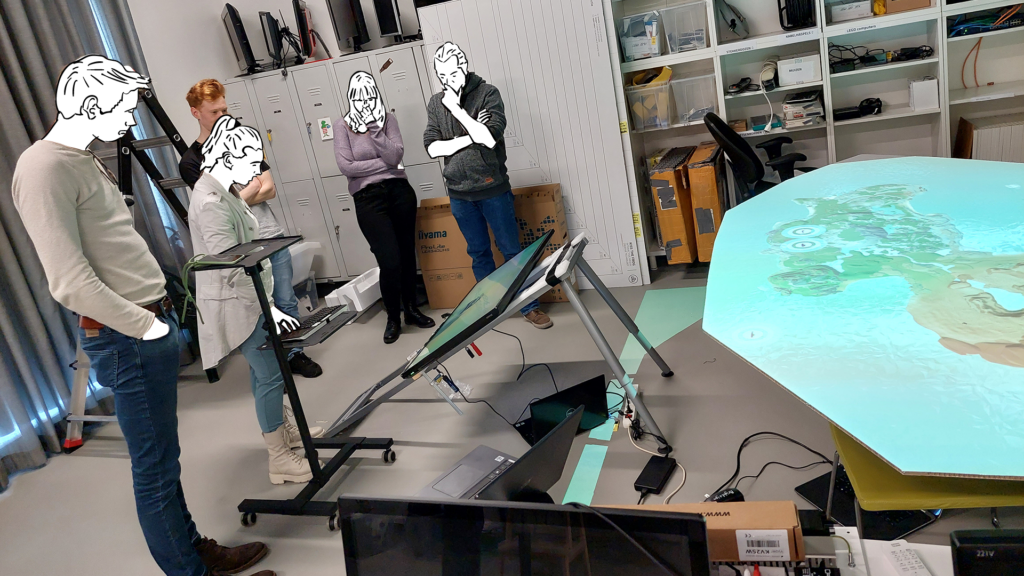
VISUAL DESIGN – Templating the look and feel
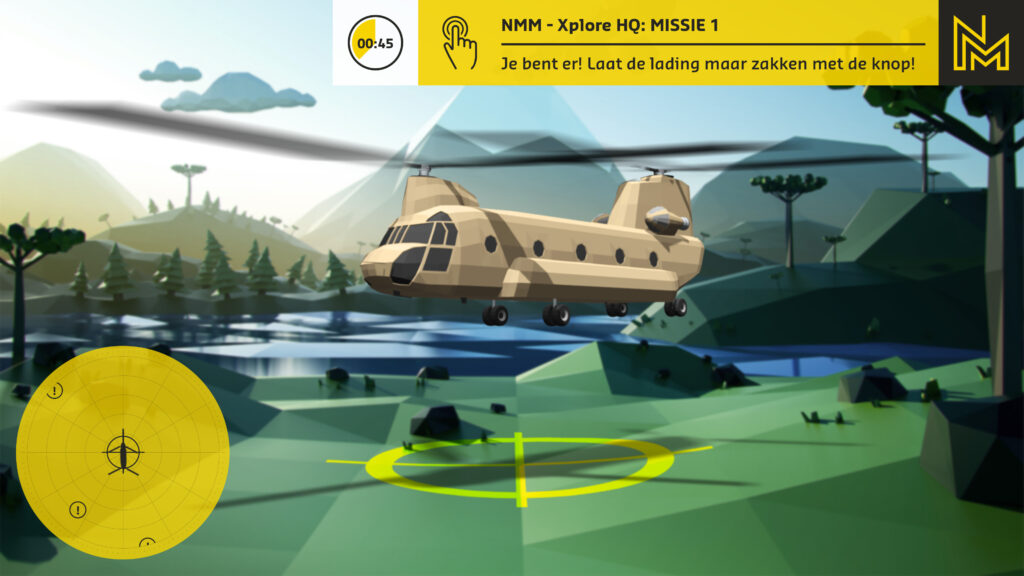
EXPLORATION & RESEARCH – Playtest insights to make it better
Insight
Decision
Players want to know what they are up to, and who is ‘in charge’ and gives the orders.
Game instructions are given by an entity in the form of the ‘HQ’ communication panel. It is digitally represented in each station.
The environment should be suitable to accommodate the movement of three distinct vehicles.
We tested the game environment early on with users in order to check if the speeds and distances match the expectations, before detailing the game environment.
By allowing the players to see each other in-game, a team spirit is created.
This fortifies the gameplay in a way that we decided to show the other vehicles (controlled by players at other game stations).
Almost everyone is a first time user. The learning curve for new game controls are steep.
Controls are simplified by having only a joystick and a button. All interactions are able to be done with these controls. In keeping the joystick simple and abstract, it allows for identical use and immersion through fantasy and imagination.
Watch out for real-life comparisons of military interventions or conflicts.
The game world is entirely fictional and designed. This removes the potential to compare it to historic events.
Make the setup suitable for multiple layers of information.
The physical dimensions of the game stations and the tilted screens ensure a good line of sight on both the game and tactical information.
FINAL EXPERIENCE – Command and conquer the map together
INTERACTION – Navigate, action!
The joystick is always used for movement: reading more by scrolling, navigating the vehicle in-world, or aiming at a target. This is specific for the stage the game is in.
The button is always used to confirm or to start an action. This can be to go to the next screen, or to perform an in-game action.
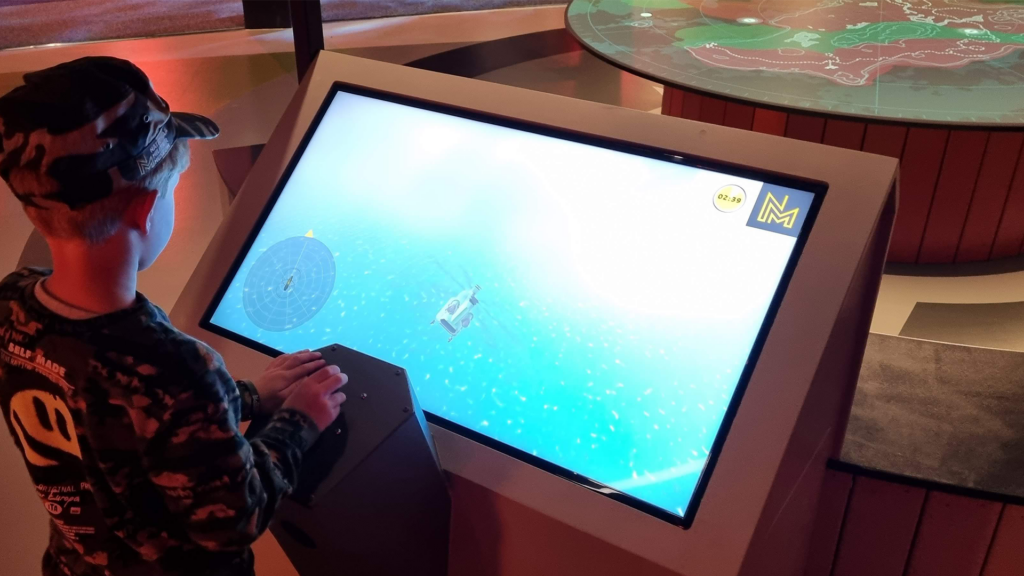
LOOK AND FEEL – Visual spectacle in low-poly style
The colors, fonts and iconography are inspired by the brand book of the exhibition.
To maintain consistency and ensure efficient design to dev handover, in collaboration with the graphic designer I developed a modular design system based on reusable components and their states. Every component can be rearranged and combined with others while maintaining design consistency and recognizable UI patterns for the user.
The digital landscape (the 3D environment) complements the form language of the playground. It is in low-polygon style. This is a match with the stylized and powerful language of the physical playground. It has a ‘gamy’ character which is stylized, strong and bold. It is simplified and playful, without becoming childish.
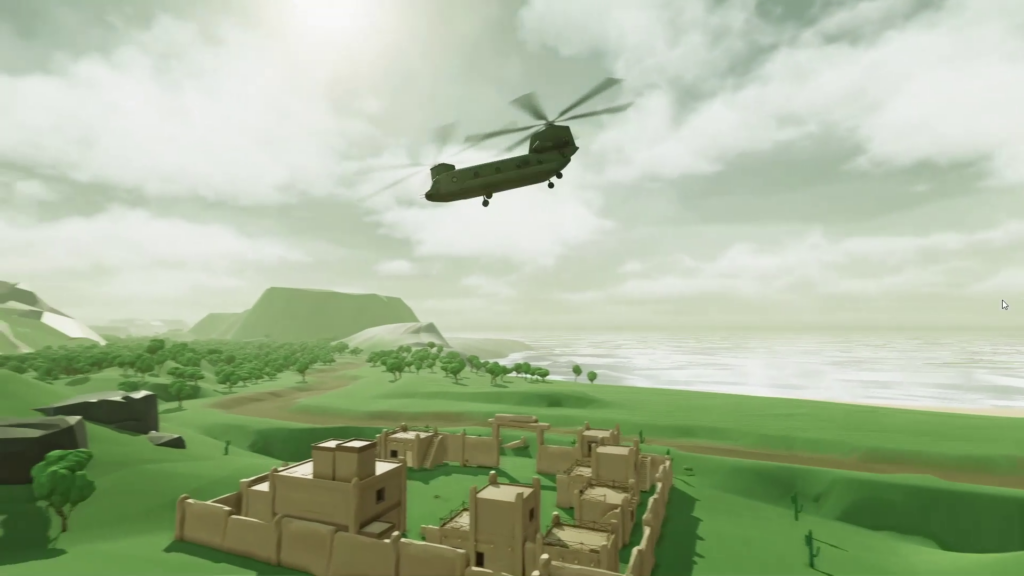
PLAYTHROUGH – Operate a vehicle and contribute to the joint operation
Screensaver Each of the stations has a screensaver with moving animation of the vehicle. By pushing the button, the player starts the setup. All playthroughs are all identical, only the mission and game environment changes, the gameflow stays the same. In the central projection, the active missions can be followed with the vehicle icons that move around. The hostile and conquered areas are color-coded.
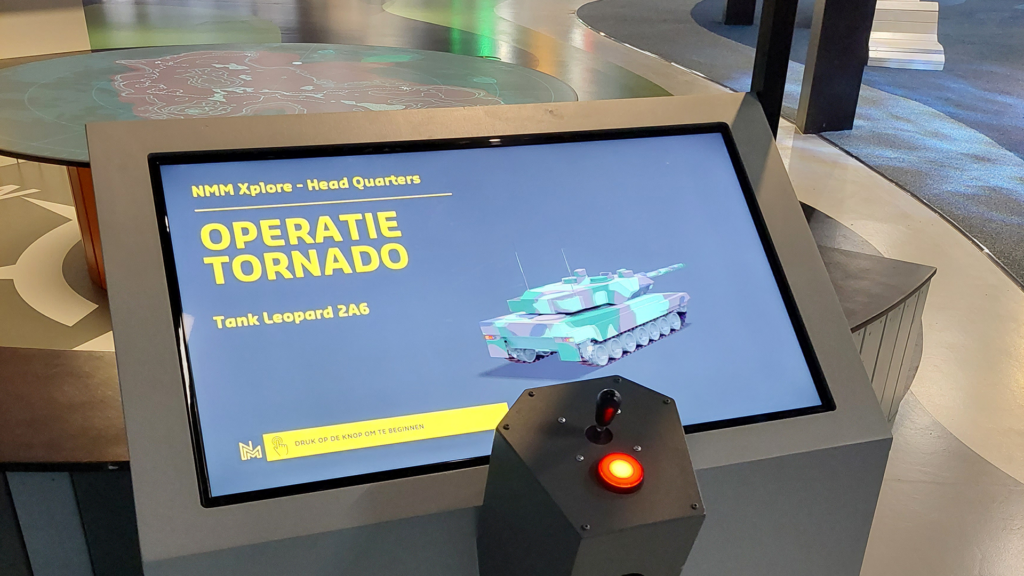
Instructions Now the instructions about the mission and the backstory of the joint operation can be read.
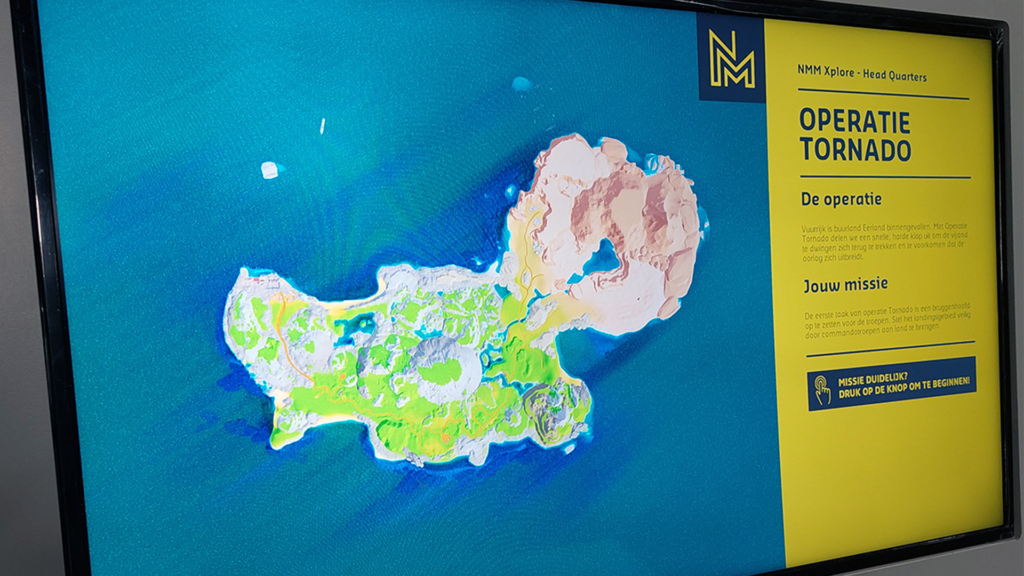
Navigate The first part of a mission is always about navigating the vehicle to the destination. This is done with the joystick. (The perspective on the vehicle is different for each game station.)
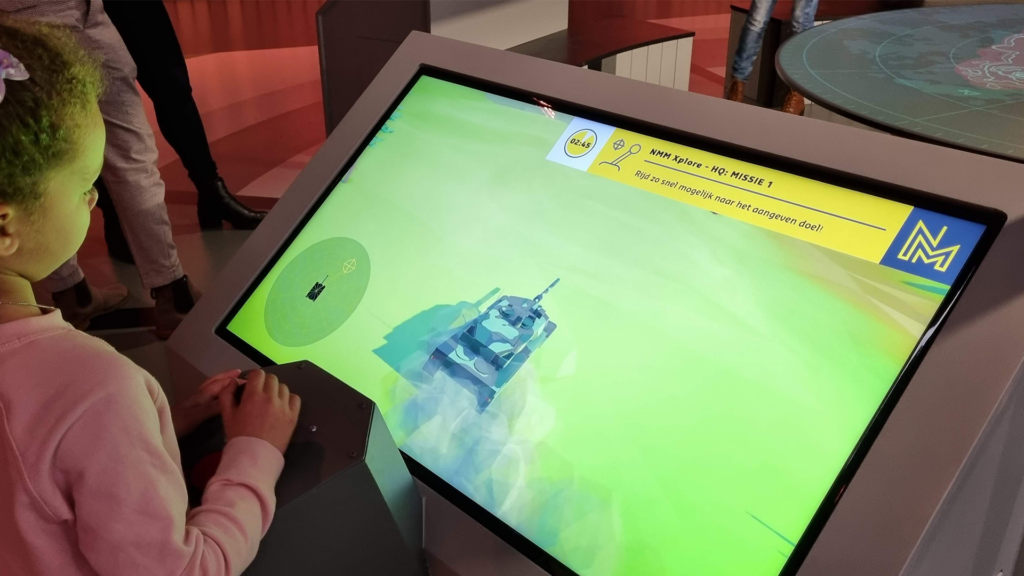
Action When the destination is reached, the second part is about doing an action. Aiming is done with the joystick, performing an action is done with the button. (The UI is different for each mission and game station.)
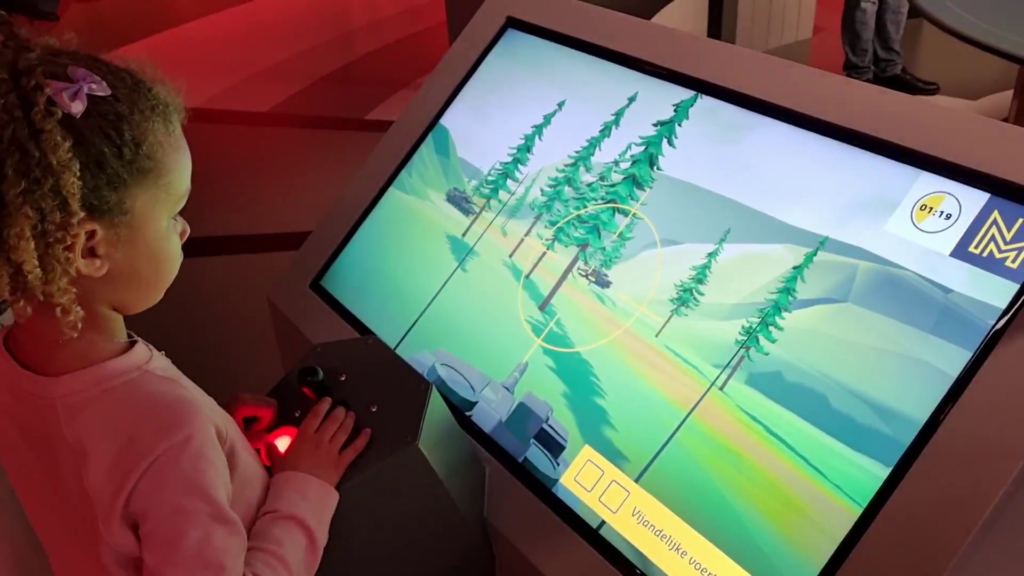
Success/fail If a mission is done successfully within the set time, the pay-off screen shows success. The map updates. (If a mission is failed, the game station gives the next player the same mission to do over.)
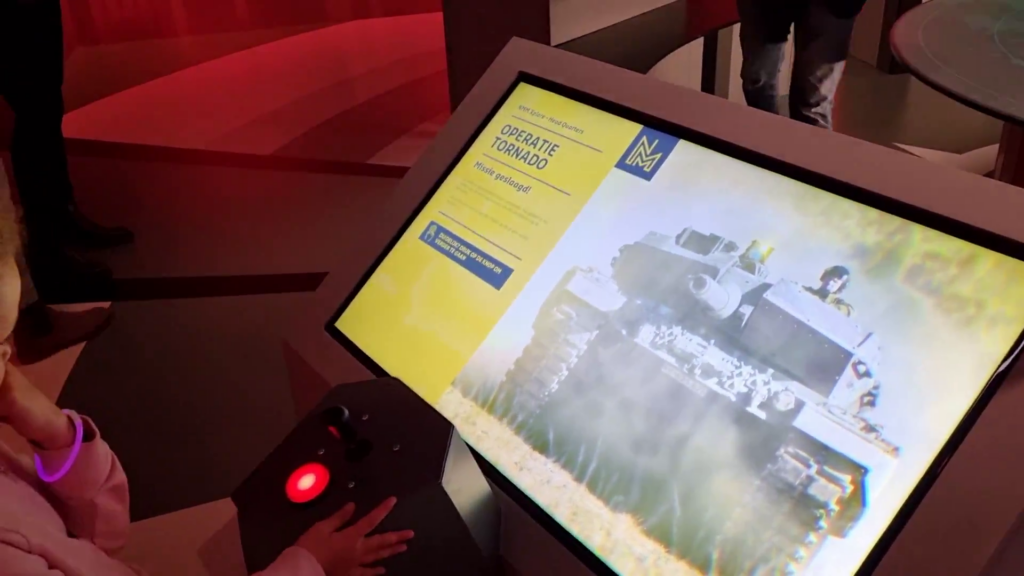
Progress The progress on the tactical map updates and becomes more green according to the part of the land that is conquered with the mission.
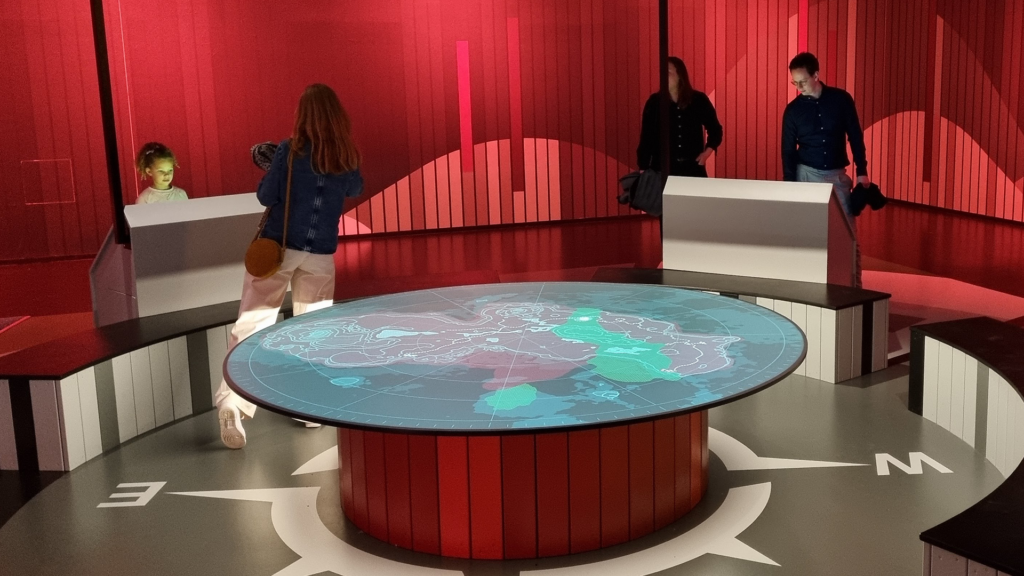
Celebration When all missions on the different game stations are done the operation is completed. Now an fly-over animation is shown. After this, the complete setup resets.
